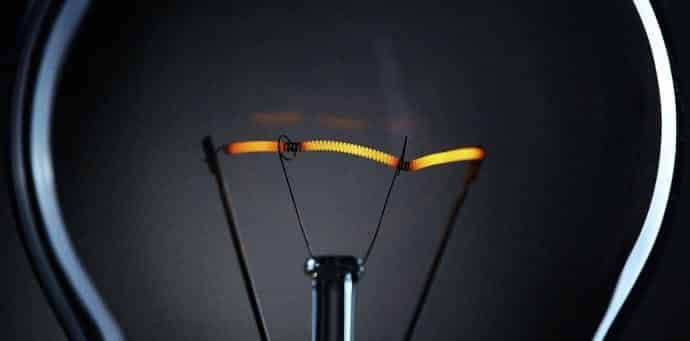Incandescent lightbulbs could become as energy efficient as LEDs using MIT’s new breakthrough design
Scientists at Massachusetts Institute of Technology (MIT) have developed an incandescent bulb design that harvests energy released as heat and uses it to continue powering the bulb.
The research was published in Nature Nanotechnology by three MIT professors namely Marin Solja?i?, professor of physics; John Joannopoulos, the Francis Wright Davis Professor of physics; and Gang Chen, the Carl Richard Soderberg Professor in Power Engineering, as well as MIT principal research scientist Ivan Celanovic, postdoc Ognjen Ilic, and Purdue physics professor (and MIT alumnus) Peter Bermel.
Commercially developed by Thomas Alva Edison, the incandescent light bulb and its familiar glow is till date one of the most influential discoveries ever made. However, that is changing quickly as regulations aimed at improving energy efficiency are phasing out the old bulbs in favour of more efficient compact fluorescent bulbs (CFLs) and newer light-emitting diode bulbs (LEDs).
This works by heating a thin tungsten wire to temperatures of around 2,700 degrees Celsius. That hot wire emits what is known as black body radiation, a very broad spectrum of light that provides a warm look and a faithful rendering of all colors in a scene.
However, more than 95 percent of the energy that goes into them is wasted, most of it as heat. That’s why country after country has banned or is phasing out the inefficient technology. But, there are many manufacturers who still sell them, using a loophole which says they can be put in industrial buildings.
MIT and the Purdue team now have joined hands to revive this old light source in a new avatar, with useful modifications and improvisations.
MIT’s design uses photonic crystals to reflect heat-carrying infrared light back at the filament, while allowing visible light through. MIT’s design uses 90 layers of these crystals to cut down on waste, while also boasting a special folded filament, which has been designed from the ground-up to optimally absorb infrared light.
“It recycles the energy that would otherwise be wasted,” said Professor Soljacic.
The researchers said their new bulb nearly doubles the amount of “luminous efficiency,” a measure of how efficiently the lighting system converts electricity to light. Typical incandescents have a luminous efficiency of 2-3 percent (CFLs are around 7-15 percent and LEDs are 5-15 percent.) But this new “two-stage” incandescent the MIT team is working on could raise efficiency up to 40 percent.
However, the test set of bulbs they have made were able to get around only 6.6 percent efficiency, which is close to the current level of CFLs and LEDs, which is already a huge improvement over current incandescents.
One of the lead MIT researchers, postdoc student Ognjen Ilic, said what they’re doing is “light recycling,” since their new material “takes in the unwanted, useless wavelengths of energy and converts them into the visible light wavelengths that are desired,” reusing energy that would otherwise be wasted.
And it shows colours far more naturally than modern energy-efficient bulbs. Traditional incandescent bulbs have a ‘colour rendering index’ rating of 100, because they match the hue of objects seen in natural daylight. However, even ‘warm’ finish LED or florescent bulbs can only manage an index rating of 80 and most are far less.
“This experimental device is a proof-of-concept, at the low end of performance that could be ultimately achieved by this approach,” said principal research scientist Ivan Celanovic.
“An important feature is that our demonstrated device achieves near-ideal rendering of colours.
“That is precisely the reason why incandescent lights remained dominant for so long: their warm light has remained preferable to drab fluorescent lighting for decades.”
In addition to returning the warm glow of incandescent bulbs to the living room, Professor Solja?i? believes that infrared-reflecting structures could have applications in a number of different energy systems. For example, Thermophotovoltaic (TPV) devices convert heat into energy, but lose some of that energy as light.
Alejandro Rodriguez, an assistant professor of electrical engineering at Princeton University who did not work on the project said the findings “provide further evidence that application of novel photonic designs to old problems can lead to potentially new devices. I believe that this work will reinvigorate and set the stage for further studies of incandescence emitters, paving the way for the future design of commercially scalable structures.”
You can read MIT’s paper on their new approach to incandescent bulbs here.

